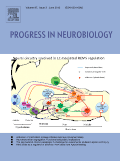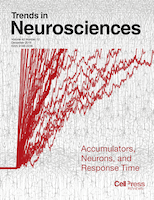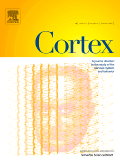
EXPERIMENTAL BRAIN RESEARCH
Scope & Guideline
Pioneering Research for a Deeper Insight into Neurology
Introduction
Aims and Scopes
- Neuroscience and Motor Control:
The journal emphasizes studies that explore the neural mechanisms underlying motor control, including motor learning, adaptation, and coordination across different populations, such as those with neurological disorders. - Sensory Processing and Integration:
Research focusing on how sensory information is processed and integrated in the brain, particularly in relation to proprioception, visual and auditory stimuli, and their impact on motor responses. - Cognitive Neuroscience:
Investigations into cognitive processes such as attention, memory, and decision-making, particularly how these processes interact with motor functions and sensory input. - Clinical Applications and Interventions:
Studies that explore the clinical implications of neuroscience research, including rehabilitation strategies for individuals with neurological impairments, and the effects of various interventions such as transcranial magnetic stimulation or exercise on brain function. - Experimental Methodologies:
The journal promotes innovative experimental designs and methodologies, including neuroimaging techniques, electrophysiological recordings, and behavioral assessments to elucidate brain function.
Trending and Emerging
- Neuroplasticity and Rehabilitation:
There is a growing emphasis on understanding neuroplasticity and its implications for rehabilitation in various populations, especially following injury or neurological disorders. - Multisensory Integration:
Research focusing on how different sensory modalities interact and affect motor control is becoming increasingly prominent, reflecting the complexity of real-world tasks. - Technological Innovations in Assessment:
The use of advanced technologies such as virtual reality and neuroimaging techniques for assessing cognitive and motor functions is on the rise, allowing for more nuanced insights into brain-behavior relationships. - Aging and Neurodegeneration:
An increase in studies examining the effects of aging on brain function and the mechanisms of neurodegenerative diseases, particularly in relation to motor control and cognitive decline. - Psychological and Emotional Influences on Motor Control:
Emerging research explores the intersection of emotional states, psychological factors, and their impact on motor performance and sensory processing, indicating a holistic approach to understanding behavior.
Declining or Waning
- Basic Neurophysiology:
There has been a noticeable decline in studies solely focused on basic neurophysiological mechanisms without direct application to behavior or clinical relevance, reflecting a shift towards more applied research. - Animal Models of Disease:
Research utilizing animal models for basic neuroscience inquiries seems to be waning, as the journal increasingly emphasizes translational studies that bridge laboratory findings with human applications. - Traditional Cognitive Assessments:
The use of conventional cognitive assessments in isolation is decreasing as researchers lean towards more integrated approaches that combine cognitive tasks with neurophysiological measures.
Similar Journals

JOURNAL OF COGNITIVE NEUROSCIENCE
Transforming knowledge of the brain into transformative insights.Welcome to the JOURNAL OF COGNITIVE NEUROSCIENCE, a premier publication in the field of cognitive neuroscience, published by the esteemed MIT PRESS. Since its inception in 1989, this journal has been at the forefront of advancing our understanding of the neural mechanisms underlying cognitive processes, boasting an impressive convergence period through 2024. With its Q1 ranking in the 2023 cognitive neuroscience category, it stands out among 115 peers, indicating its critical role in shaping contemporary research. The journal offers a comprehensive array of research articles, reviews, and methodologies aimed at researchers, professionals, and students alike, facilitating the exploration of complex cognitive functions. While not an open-access journal, it provides essential insights and significant contributions to the neuroscience community, making it an invaluable resource for anyone keen on delving into the intricacies of the human brain.

BRAIN AND COGNITION
Pioneering Research in Cognitive ProcessesBRAIN AND COGNITION, published by Academic Press Inc Elsevier Science, stands as a vital resource for researchers and practitioners in the realms of cognitive neuroscience and psychology. Established in 1982, the journal has continuously evolved, showcasing cutting-edge research that bridges the understanding of brain functions and cognitive processes up to 2024. With an impressive impact factor reflecting its commitment to high-quality scholarship, the journal currently holds a prestigious Q1 ranking in Arts and Humanities (miscellaneous) and notable Q2 rankings in various psychology fields, including Cognitive Neuroscience, Developmental and Educational Psychology, Experimental and Cognitive Psychology, and Neuropsychology. This multidisciplinary journal cultivates a rich academic dialogue, offering valuable insights to professionals, researchers, and students alike. Although it does not offer open access, its robust indexing in Scopus and consistent contribution to important discussions in cognitive research define its critical role in advancing knowledge and innovation in the cognitive sciences.

PROGRESS IN NEUROBIOLOGY
Illuminating the Path of Neurobiological ResearchPROGRESS IN NEUROBIOLOGY is a prestigious journal dedicated to advancing the field of neuroscience, published by Pergamon-Elsevier Science Ltd. With an impressive impact factor, it stands as a critical resource for researchers, professionals, and students alike, featuring rigorous peer-reviewed articles that explore the latest developments in neurobiology. The journal has established itself as a leading publication, ranked in the Q1 category for Neuroscience (miscellaneous) and holding a notable 13/113 rank in General Neuroscience per Scopus metrics, placing it in the top 12% of its field. Since its inception in 1959, PROGRESS IN NEUROBIOLOGY has covered a wide array of topics, from molecular mechanisms to cognitive processes, fostering a comprehensive understanding of brain functions. While the journal is not open access, it ensures accessibility to profound knowledge through institutional subscriptions. Researchers and scholars will find critical analyses and innovative research that are pivotal for both foundational knowledge and cutting-edge investigations in the neuroscience realm.

Frontiers in Integrative Neuroscience
Pioneering innovative insights into cognitive and sensory systems.Frontiers in Integrative Neuroscience, published by FRONTIERS MEDIA SA, is an esteemed open-access journal dedicated to advancing our understanding of the intricate workings of the nervous system. Since its inception in 2007, this journal has become a key resource for researchers and professionals in the field, covering a wide range of topics including cellular and molecular neuroscience, cognitive neuroscience, and sensory systems. With a reputation bolstered by its open-access model, Frontiers in Integrative Neuroscience aims to promote expedient dissemination of high-quality research, ensuring that all findings are readily accessible to the scientific community and beyond. The journal has achieved a commendable recognition, ranking in the upper tiers of its respective categories according to Scopus, with a Q2 ranking in both cognitive neuroscience and sensory systems, and a Q3 ranking in cellular and molecular neuroscience. Based in Switzerland, it continues to be a pivotal platform for innovative research that shapes our understanding of neural dynamics, encouraging collaboration and knowledge exchange among scholars worldwide.

TRENDS IN NEUROSCIENCES
Advancing Knowledge in Neural ProcessesTRENDS IN NEUROSCIENCES, published by CELL PRESS, is a leading journal in the field of neuroscience, offering cutting-edge insights and important developments in the rapidly evolving landscape of brain research. With an impressive Impact Factor and ranking in the top quartile (Q1) of the category for Neuroscience (miscellaneous), it is positioned as a vital resource for researchers and professionals seeking to stay abreast of the latest discoveries and trends from 1978 to the present. Specifically ranked #3 out of 113 in General Neuroscience by Scopus, this journal promotes the interdisciplinary exchange of ideas and knowledge, making it an essential platform for students and experienced scholars alike. Although it is not an Open Access journal, its value lies in its rigorous peer-review process and commitment to maintaining the highest standards of academic integrity. By continuing to explore the complexities of neural processes and behavior, TRENDS IN NEUROSCIENCES plays a crucial role in shaping the future of neuroscience research and education.

CORTEX
Transforming Knowledge into Practice in Cognitive ScienceCORTEX is a premier international journal published by Elsevier Masson, focusing on the cutting-edge areas of cognitive neuroscience, psychology, and neurology. With an impressive impact factor that places it in Q1 quartiles across multiple categories such as Cognitive Neuroscience and Neuropsychology, this journal serves as a vital resource for researchers, clinicians, and students alike. Established in 1964, CORTEX has continued to excel in disseminating high-quality scholarly work, offering insights that significantly enhance our understanding of the brain's functioning and behavior. Although not an open-access publication, it provides various access options to ensure the dissemination of knowledge is as wide-reaching as possible. As the field of cognitive psychology evolves, CORTEX remains at the forefront, fostering an environment for interdisciplinary collaboration and innovation. Researchers seeking to stay engaged with the latest advancements will find CORTEX an indispensable tool for their professional development.

BRAIN BEHAVIOR AND EVOLUTION
Pioneering Research at the Intersection of Neuroscience and EvolutionBRAIN BEHAVIOR AND EVOLUTION, with ISSN 0006-8977 and E-ISSN 1421-9743, is a prominent journal dedicated to the intricate connections between brain function, behavior, and evolutionary processes. Published by KARGER in Switzerland, this journal has established itself as a crucial resource in the fields of Behavioral Neuroscience and Developmental Neuroscience, evidenced by its respectable 2023 category quartiles of Q2 and Q3, respectively. With a rich publication history spanning from 1968 to 2024, BRAIN BEHAVIOR AND EVOLUTION presents original research articles, reviews, and theoretical contributions that investigate the biological underpinnings of behavior, making it an essential platform for researchers, professionals, and students committed to advancing our understanding of neurobiological and evolutionary mechanisms. Although it is not an open-access journal, its rigorous peer-review process ensures that only high-quality research is disseminated, maintaining the journal's impact in the academic community.

SOMATOSENSORY AND MOTOR RESEARCH
Fostering Knowledge in Neuroscience and PhysiologySOMATOSENSORY AND MOTOR RESEARCH is a distinguished journal dedicated to exploring the intricate relationship between sensory and motor systems. Published by Taylor & Francis Ltd, this journal has been a significant resource for researchers in the fields of neuroscience and physiology since its inception in 1983, until it converged its coverage in 2017. Although it is no longer indexed in Scopus, SOMATOSENSORY AND MOTOR RESEARCH continues to contribute valuable insights into sensory systems and physiology, evidenced by its rankings in the lower percentiles of its respective categories. With a strong focus on empirical research, the journal aims to facilitate the dissemination of innovative studies that impact both academic understanding and clinical practices. Potential authors and researchers can access the journal's collection of past articles to further their knowledge and foster collaboration in this niche yet vital area of study. Its legacy endures as an informative platform for academics looking to bridge the gap between theoretical and applied sciences in the realm of somatosensory and motor functions.

Multisensory Research
Illuminating the Path of Sensory ExplorationMultisensory Research is a premier academic journal published by BRILL, dedicated to advancing the fields of cognitive neuroscience, computer vision, and sensory systems. Established in the Netherlands, the journal boasts a diverse scope, exploring the integration of sensory modalities in both experimental and cognitive psychology. With its converged years extending from 2013 to 2024, Multisensory Research has consistently contributed valuable insights, earning a well-regarded position within various quartiles, notably Q2 in Computer Vision and Pattern Recognition and Q2 in Ophthalmology as of 2023. The journal’s rankings reflect its significant impact, with placements such as rank #50 in Ophthalmology and rank #84 in Experimental Psychology, highlighting its relevance to today's interdisciplinary research efforts. Available as an open-access platform, Multisensory Research ensures that innovative research is accessible to a wide audience, making it an essential resource for researchers, professionals, and students alike who are engaged in the dynamic study of multisensory integration.

Frontiers in Human Neuroscience
Championing Open Access in Neuroscience ResearchFrontiers in Human Neuroscience is a premier open access journal published by FRONTIERS MEDIA SA, dedicated to advancing the understanding of the complexities of human neuroscience. With an ISSN of 1662-5161, the journal has established its prominence in various fields, achieving a Q2 ranking in categories such as Behavioral Neuroscience, Neuropsychology and Physiological Psychology, and Psychiatry and Mental Health as of 2023. Since its inception in 2008, Frontiers in Human Neuroscience has consistently contributed to the scholarly dialogue by offering a platform for innovative research that bridges the gap between neuroscience and behavioral science. The journal's rigorous peer-review process and commitment to open access ensures that findings are readily available, promoting collaboration and progress within the academic community. With an impact on neuroscience disciplines, it stands at the forefront of the field, inviting researchers, professionals, and students alike to engage with cutting-edge studies and developments. The journal's address is located in Lausanne, Switzerland, where it continues to flourish as a hub for neurobiological exploration.